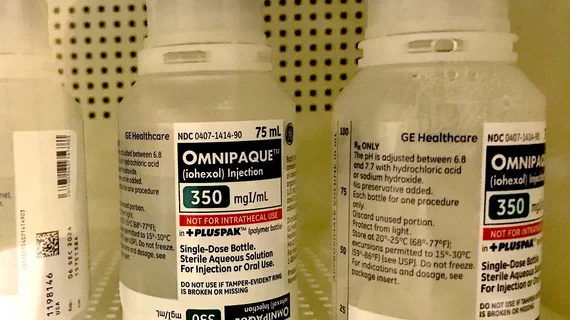Iodinated contrast use before, during and after COVID: Trends predict significant growth in demand
During the height of the iodinated contrast shortage, experts offered numerous mitigation strategies while also questioning whether the imaging field had become over-reliant on its use. As the issue has eased, focus has shifted to the future use of the medical imaging agent.
“The current iodinated contrast agent shortage in the United States has canceled, delayed, and modified many CT exams—highlighting CT's necessity for efficient and timely patient care. Although the current shortage is easing, there was little preparation which created surprise at the vulnerability of the iodinated contrast supply and point-of-care responsibilities,” noted the author of a new paper published in Clinical Imaging, James Goldfarb of St. Francis Hospital and Heart Center in New York.
Goldfarb conducted an analysis of contrast-enhanced CT imaging in the United States before, during and after the onset of COVID using publicly available data on Medicare Part B fee-for-service physician payments dating back to 2013.
The data revealed that scans utilizing contrast accounted for around 36% of CT scans in 2013. By 2019, the total number of CT scans completed among the Medicare population had risen by 31.4%, with contrast-enhanced studies accounting for 37.5%. In 2020, during the height of COVID, a nearly 9% drop in CT use was observed, 38.5% of which utilized iodinated contrast.
Goldfarb suggested that if the use of iodinated contrast were to follow pre-pandemic trends, it is reasonable to assume that in the coming years it could rise by as much as 37% from 2019.
The expert advised that radiology leaders, contrast media manufacturers/suppliers, software solution developers, public policymakers and advocates should all take notice of these trends. If the upward trend continues, he suggests, the demand for iodinated contrast will inevitably rise, and by addressing shortcomings in manufacturing, reserves and software solutions now, it could help ward off drastic supply shortages in the future.
To view the paper, click here.

